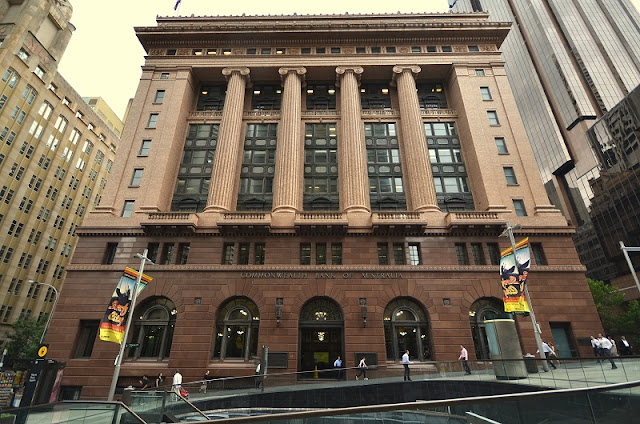Australian Companies
Commonwealth Bank of Australia (CBA)
At present, the Commonwealth Bank of Australia is the largest company currently on the ASX and the biggest of Australia’s Big 4 Banks. Best known as Australia’s premier retail bank, the CBA is Australia’s largest residential lender. Valued at over $150 billion, despite the coronavirus pandemic weighing heavily on the financial sector, CBA proved resilient, retaining a strong capital position, handing down an interim FY21 dividend of $1.50 per share and seeing volume growth across its core lending portfolios.
BHP Group (BHP)
At present, BHP Group is the second-largest company on the ASX. Boasting a market capitalization of nearly $134 billion, BHP is a global mining giant, specializing in the exploration and production of commodities such as coal, gold, copper, and iron ore, as well as the exploration and refinement of petroleum. A dually listed firm, but with its Australian headquarters based in Melbourne, BHP delivered as part of its most recent interim results, the miner reported revenue of US$25,639 million (+15%) and profits of US$3,876 (-20%).
CSL Limited (CSL)
CSL is a leader in Australia’s biotechnology industry. Valued by market capitalization at $116 billion, the company develops, manufactures, and markets human pharmaceutical and diagnostic products made from human plasma. Despite experiencing some share price weakness in recent times, CSL continues to trade at an above-market PE ratio of 34x, suggesting that growth expectations remain elevated. As part of its FY21 interim results, CSL reported net profit after tax of US$1,810 million (+44%), EPS of US$3.98, and an interim dividend of US$1.04 per share (+9%).
Westpac Banking Group (WBC)
Australia’s second-largest bank by market capitalization, Westpac provides commercial banking services to individuals, businesses, corporations, and institutions domestically and abroad. Australia’s oldest bank, established in 1817 as the Bank of New South Wales, Westpac is one of two of Australia’s Big 4 Banks headquartered in Sydney. As part of the bank's most recent first-quarter update, WBC reported statutory net profits of $1.70 billion against unaudited cash earnings of $1.9 billion. As part of these results, Westpac reported a net interest margin of 2.06% and a CET1 ratio of 11.9%.
National Australia Bank (NAB)
The third largest of Australia’s Big 4 banks, the National Australia Bank is valued at $86 billion by market capitalization. Considered Australia’s 'business bank', NAB derives most of its revenue from domestic operations. The NAB is one of two of Australia’s Big 4 based in Melbourne, the other being the ANZ. With the coronavirus pandemic hurting financial stocks across the board and regulators putting more scrutiny on payouts, NAB’s dividend yield currently stands at 2.28%.
ANZ Banking Group (ANZ)
The smallest of the big four banks, ANZ positions itself as Australia’s bank with reach throughout the Asian region. An institution with a global mindset, the ANZ derives significant revenue from its institutional service offering. Of course, it also specializes in areas from depositary banking, mortgage lending, and general finance. As with many other Australian banks, the last year has proven to be challenging for ANZ, with low-interest rates putting pressure on margins and regulators placing heavier scrutiny on dividends. ANZ’s dividend yield currently stands at 2.11%.
Fortescue Metals Group (FMG)
Fortescue Metals Group has been a significant benefactor of the monumental run-up in iron ore prices over the last year, seeing its revenues and earnings surge in response. At the time of writing iron ore stood at a multi-year high, trading at US$168 per tonne. It has also attracted a lot of attention from investors, with Fortescue now boasting a market capitalization of around $62.5 billion. Unlike many of the banks which have seen their dividend payouts impact as a result of the pandemic, Fortescue has moved from strength to strength, consistently upping their payouts. The miner most recently paid an interim dividend of A$1.47 per share, some 93% higher than the dividend from the prior corresponding period.
Wesfarmers
The eighth-largest company on the ASX, with a market capitalization of $57 billion, is Perth’s Wesfarmers Ltd. A key Australian conglomerate, Wesfarmers focuses on several different commercial areas, Wesfarmers owns retail chains, operates mines, writes insurance, produces industrial products, and distributes liquefied petroleum, amongst other activities. For income-focused investors, Wesfarmers dividend has proven resilient over the last year. The company currently boasts an annual yield of 3.60%.
Macquarie Group
Macquarie Group is Australia’s largest investment banking firm, with a significant international presence. Affectionately known as the 'millionaire’s factory', shareholders themselves have shared in the benefits of a growing Australian corporate giant. Since we first published this article Macquarie has seen its market capitalization balloon by ~$15 billion – last sitting at $54.7 billion. Despite its market value rising, the financial firm, like many others in the space has seen its profitability decline in recent times. In November 2020, Macquarie reported first-half net profits of AUD 985 million, representing a 32% decline on the prior corresponding period.
Woolworths Group (WOW)
Australia’s number one food retailer, Woolworths Group specializes in the operation of supermarkets and general consumer stores, along with engaging in the procurement of food, liquor, and other products. The company also has interests in other consumer goods and services, ranging from pubs, accommodation, and gaming operations. Valued by market capitalization at nearly $50 billion, investors consider Woolworths as one of ASX’s 'defensive' consumer staples sector stocks. Woolworth's current dividend yield stands at 2.56%.














0 Comments